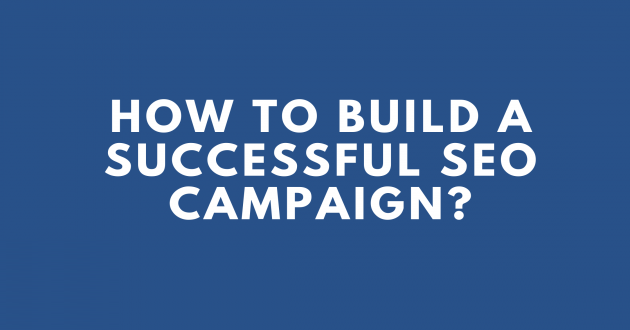Are you planning to start an SEO campaign? If yes, you need to think about many factors, but you should first know that how Search Engine Optimization is done these days is much different from back in 2021.
RankBrain & Keyword Rankings
RankBrain is a machine learning (AI) algorithm that Google uses to arrange the search results. It assists Google procedure and knows search queries better while also providing users a great experience with their products.
However, 100% of Google’s algorithm was hand-coded. Thus when they created an algorithm update, it was permanently transformed. However, consultants still carry out some coding in the front end of things, but RankBrain tweaks the backdrop algorithm customized for each person’s search result. This shows that Google’s algorithm is ever altering.
When it comes to ranking factors, it is not even black and white at all. Google’s AI will augment or reduce the significance of your backlinks, content, domain authority, and many more, as it depends on the keyword that is being searched. It also looks at the personal user’s intent and how they communicate with the search results. For instance, if the user looks like the latest results RankBrain has selected for them, the algorithm changes for that individual; if not, it will roll back to the older version.
Keyword rankings and research have been wholly replaced considerably because of this algorithm. Because Google knows well that user aims more than keywords, they are excellent at recognizing particular synonyms around specific keywords. It is about optimizing for keywords, and the now vital thing is to optimize for theories or specific topics.
RankBrain is knowledge of new keywords and ideas every single day. This brings the search results quite user-friendly, finding the people what they are looking for quickly.
Now that you have already known what SEO is all about in 2020, you can now begin to craft an SEO campaign with some more straightforward steps.
Step 1: Analyze Your Current Website Setup
Before you start, you should know the necessary information about your website. Here are the things you must-have look for when analyzing your setup:
What is your website platform?
You have to understand if your site is based on a state-of-the-art or redundant platform. An innovative platform, such as HubSpot, is very speedy, safe, and much more comfortable to optimize. It is also more versatile when it comes to creating and makes all small changes to your website. If your platform is invalid, we will highly recommend turning it over to HubSpot or another more state-of-the-art platform like WordPress or Marketo. It is often cheaper to transfer media than to pay someone to optimize an invalid, confusing platform.
Do you need to change your current design?
It is hard to decide whether or not you need to modify your website design. You might be wholly connected to your existing structure, but it might not be the most accessible, well-made website for SEO purposes. If you are changing to the latest platform, this can be a simple method because you can typically change it to a new theme and tailor it how you desire it.
If either of these problems continues, fix them before the optimization phase.
If your website is not right, outdated, or not user-friendly, an SEO campaign will have a little effect. You require much more than just the right keyword and optimization strategy to thrive.
Step 2: Topic Conception & Keyword Research
As given earlier, we must be optimizing around topics before keywords. However, we still need to carry out some keyword research to look at what types of keywords within that exact topic we would like to optimize.
First of all, we have to turn up the topics we would like to concentrate on. We perform this throughout a brainstorming session. Note down as lots of issues as you can create. A problem is typically just one or two words long, such as “Digital Marketing” or “About Us.” Ask yourself the following to start:
What are your customers searching for?
What products/services do you offer?
What message do you want to convey?
What topics do you would like to write about?
What topics do you at present write about?
Once you have created the list, try to navigate as much as possible. Merge duplicates, eliminate inappropriate/not required, and only decide what you feel is most imperative. Remember that you can always return this later down the road.
After the topics are decided or chosen, it is the right time to research what you want to optimize your website around. We apply SEMRush for this at www.novaseoservices.com, but there are many other tools, like Moz or Rank Tracker.
To start this process, record all of your work and detach all of your researched keywords by topics.
We begin by looking at what keywords we are previously ranking for and choosing what our participants are ranking for. Once I have obtained all of this into account, we can use our tool to research some added concepts within that topic with SEMRush’s keyword magic tool. You fix a keyword/topic, and it will provide you some suggestions.
Once the research is carried out, we want to browse a little so that each topic is related to about 7-10 target keywords. It is a better rule of thumb to select keywords with advanced search volume that you are already ranking well to a great extent, which will be achievable.
Step 3: Establish a Pillar Content Strategy
Content is the mainstay of a website, and if you do not implement a content strategy accurately, you might be skipping out on some serious search engine rankings. Like Google’s Algorithm, the way we produce SEO content is different from earlier.
Once you have your topics and keywords decided, it is imperative to perform long-tail keyword research to produce the content strategy. These sorts of keywords will be utilized as either blog article titles or for what we describe pillar content parts. Both of these parts of content will work hand-in-hand to get higher traffic and keyword rankings.
Pillar content (also famous as 10x content) is a long-term part of content around each of our particular topics. These pages can be updated eBooks or instructions and can be made from the already-existing content or recently made content parts to help us rank higher. The consideration is that if we make this long-term part of the content, users are almost certainly to be connected, continue the site longer, and will obtain more of what they are seeking out.
To assist these parts of pillar content, we would like to make topic clusters. We will make use of long-tail keywords to write relevant blog articles that point back to this content, like:
By connecting back to the content, we are saying to Google that this page, and the posts surrounding it, are significant to our website and describe just what we carry out for our users and what we offer them. This will eventually assist the website rank higher and obtain more traffic.
Step 5: Define & Track Your Goals
Before you start carrying out any SEO strategy, it is imperative to explain your objectives and track them. If you do not understand what success seems like for your company, then you have no way of describing whether or not that strategy you create has worked or not.
Your first consideration is that this is a straightforward response, follow keyword rankings. This isn’t very accurate and should not be how you assess success. Every single search result on every single user’s browser is poles apart. This is because each person is looking for a different thing every day. Google tracks their search history and provides them the most outstanding results based on what their searches notify them. This goes back to our previous discussion about RankBrain.
The most excellent types of things to determine are what folks are doing once they achieve your website. Tracking user performance will inform you whether or not people are going to your website and whether they enjoy your content. You will understand this by looking at stopovers to your website, bounce rate, and commitment level. A tracking tool like Google Analytics will assist you in understanding what all of this talking about.
Step 7: Work on Local SEO
Local SEO at www.novaseoservices.com lets local businesses advertise their services to local customers when they are looking for your sort of business. Local SEO makes use of search engines like Google and Bing and business lists like Yelp to assist your site’s local presence go up.
The primary step in local SEO is to ensure that your Bing and Google My Business Listing are developed appropriately. The most imperative thing about these listings is that the address should go with just how it is on your website. You will then optimize the listings with images, a description, profile photo, etc.
Once all of this is done correctly, you must claim and make sure your listings. This shows that you have only possession over them, and nobody else can edit it until you provide them permission. Having a confirmed listing comprises more weight than the reverse.
Once the Bing and Google Local Listings are fully optimized, we will start to make added business documents, such as Yelp and Yellow Pages. These listings will help promote your Google and Bing listings and consecutively will obtain you more traffic to your website.
Step 8: Work on Back Links
A backlink is when anyone is connecting back to your website. This is one of the significant three ranking factors in Google and always has put the weight. It is most significant that you are paying attention to the quality of these links before the amount. If you have plenty of lousy quality backlinks in your profile, you might get punished, and your rankings would fall. It is vital to watch who is linking to you and ensuring it is pertinent.
Before you start producing links, look at who is presently linking to you and ensure they are not contaminated and will not harm you in the long run. You can carry out this by working a backlink report in any of the unique tools, as we mentioned, to prove the links that should be eliminated.
Once you have eliminated any low links, it is the right time to produce more to build up your website’s authority. There are numerous methods you can create backlinks. Some quick wins that you can use are as follows:
Competitive Link Building:
Various tools like SEMRush will assist you in exploring your competitors’ backlink summary. By looking at what they are carrying out, you can try and acquire links on similar websites to participate in that peak spot on Google. With this method, you should be careful to select the more robust and reliable connections to acquire.
Industry Related Directory Link Building:
Choosing the industry-specific lists with great faith and authority can be challenging. However, with this practice, you can find a more significant backlink to your space; it will be a big addition to your profile.
An imperative thing to keep in mind is that an effective SEO campaign should be carefully supervised and optimized for the best results. SEO is not only a one-time deal. It can be instrumental in getting your own SEO Company to assist with an SEO strategy’s ongoing efforts.

